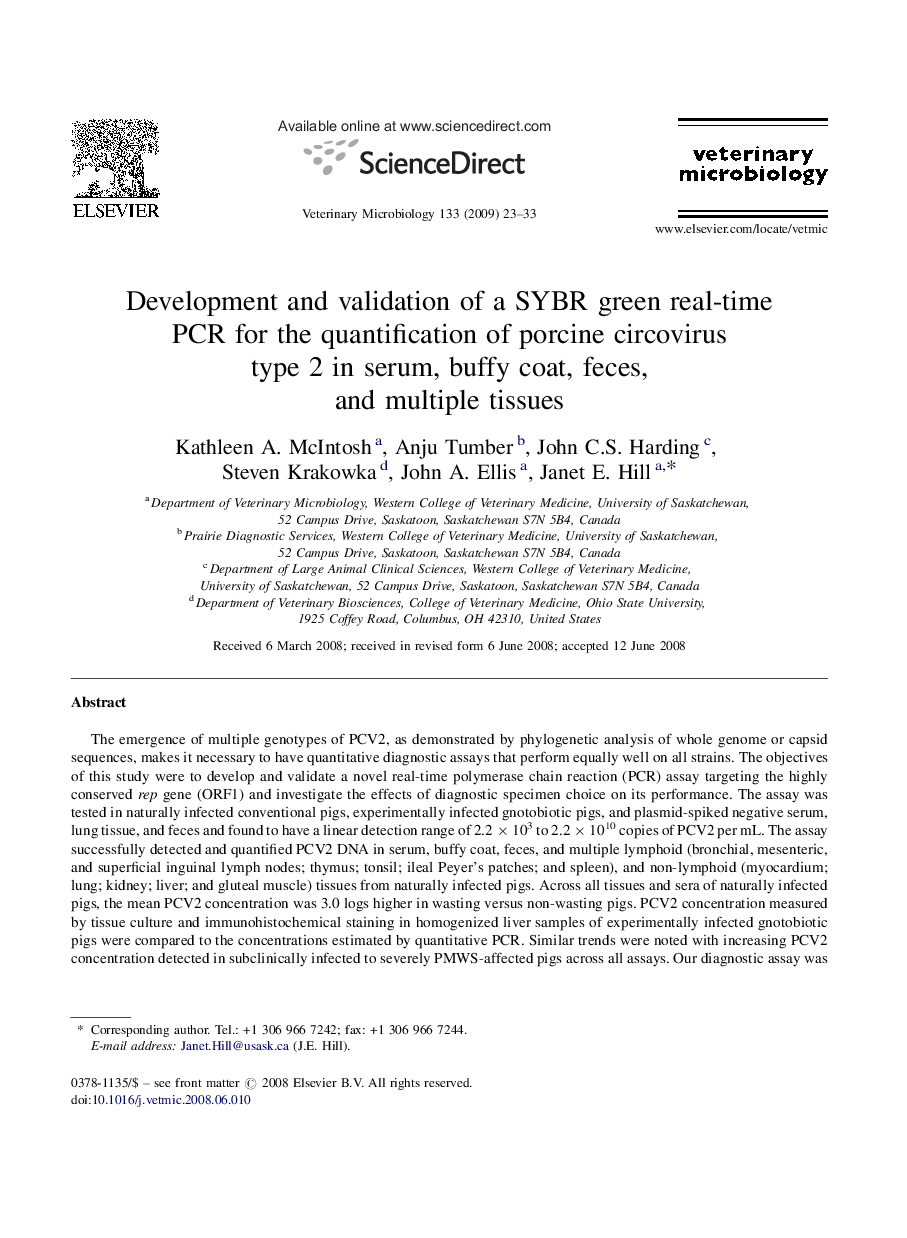| Article ID | Journal | Published Year | Pages | File Type |
|---|---|---|---|---|
| 2468417 | Veterinary Microbiology | 2009 | 11 Pages |
The emergence of multiple genotypes of PCV2, as demonstrated by phylogenetic analysis of whole genome or capsid sequences, makes it necessary to have quantitative diagnostic assays that perform equally well on all strains. The objectives of this study were to develop and validate a novel real-time polymerase chain reaction (PCR) assay targeting the highly conserved rep gene (ORF1) and investigate the effects of diagnostic specimen choice on its performance. The assay was tested in naturally infected conventional pigs, experimentally infected gnotobiotic pigs, and plasmid-spiked negative serum, lung tissue, and feces and found to have a linear detection range of 2.2 × 103 to 2.2 × 1010 copies of PCV2 per mL. The assay successfully detected and quantified PCV2 DNA in serum, buffy coat, feces, and multiple lymphoid (bronchial, mesenteric, and superficial inguinal lymph nodes; thymus; tonsil; ileal Peyer's patches; and spleen), and non-lymphoid (myocardium; lung; kidney; liver; and gluteal muscle) tissues from naturally infected pigs. Across all tissues and sera of naturally infected pigs, the mean PCV2 concentration was 3.0 logs higher in wasting versus non-wasting pigs. PCV2 concentration measured by tissue culture and immunohistochemical staining in homogenized liver samples of experimentally infected gnotobiotic pigs were compared to the concentrations estimated by quantitative PCR. Similar trends were noted with increasing PCV2 concentration detected in subclinically infected to severely PMWS-affected pigs across all assays. Our diagnostic assay was developed with a conserved target sequence, and performed efficiently in quantification of PCV2 in a variety of tissues from naturally and experimentally infected pigs.
